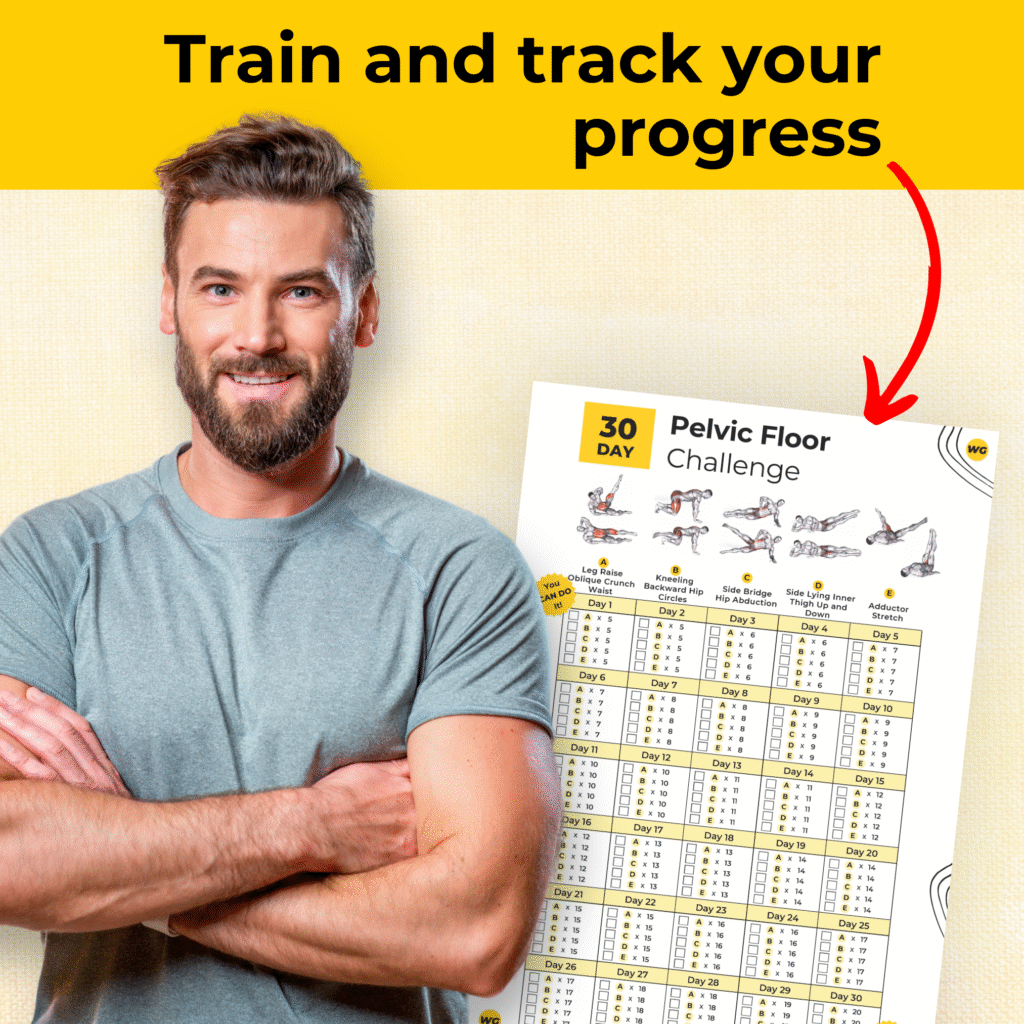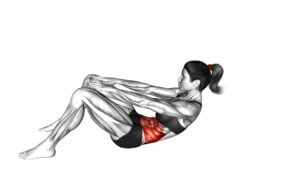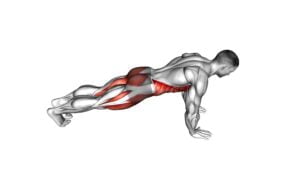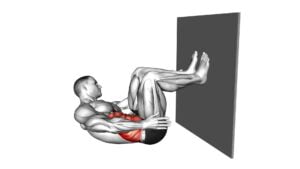Knee Touch Crunch – Video Exercise Guide & Tips
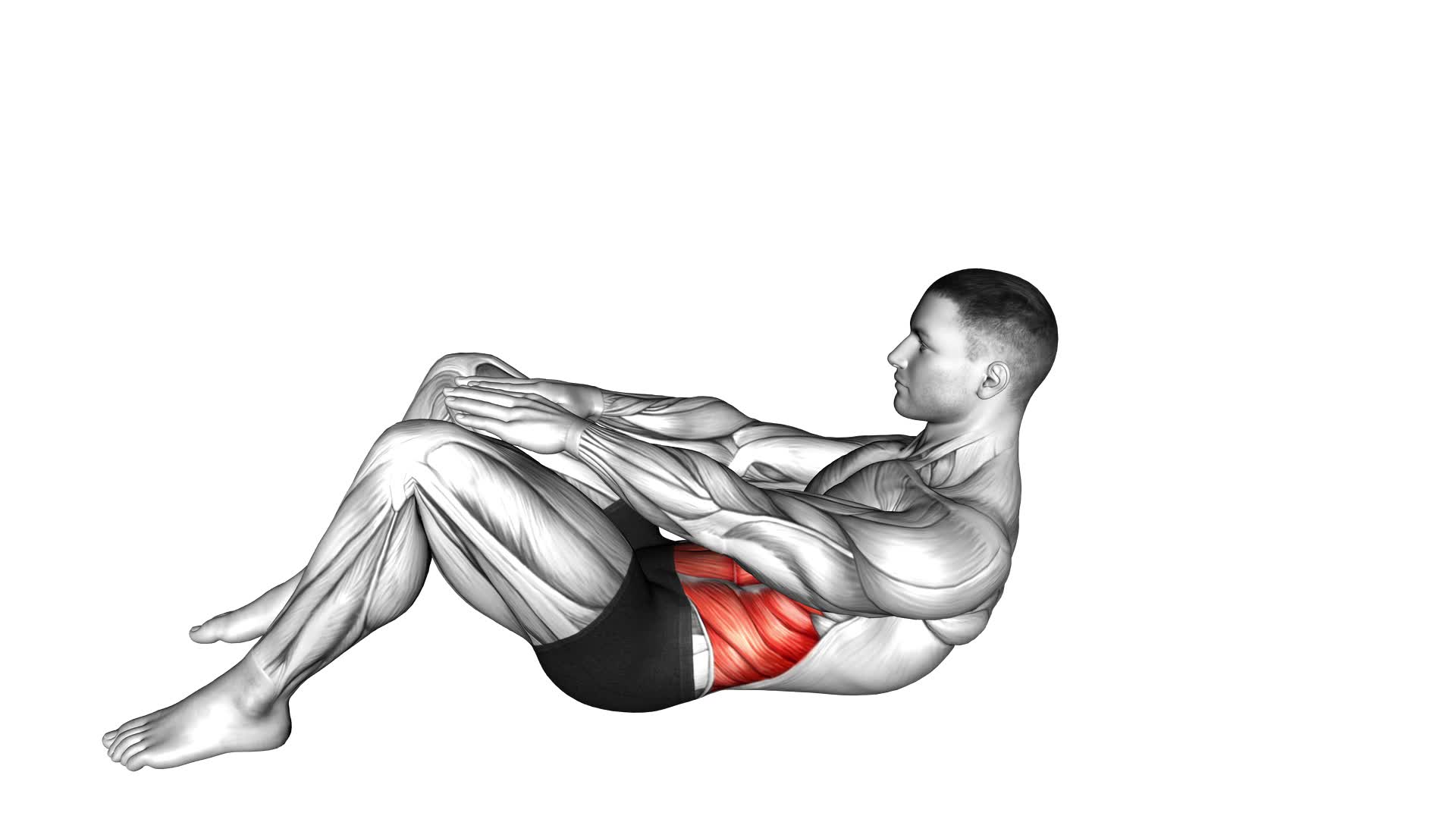
Are you looking for an effective abdominal exercise that targets your core? Look no further than the Knee Touch Crunch!
Watch This Exercise Video
This exercise is designed to strengthen your abs and improve your overall core stability. In this article, we'll provide you with a video exercise guide and tips to help you perform the Knee Touch Crunch with proper form and technique.
Whether you're a beginner or an advanced fitness enthusiast, we've got you covered with modifications and common mistakes to avoid.
Let's get started!
Key Takeaways
- The knee touch crunch strengthens core muscles and improves abdominal strength.
- It increases flexibility in the lower back and hips and enhances overall range of motion.
- Engaging core muscles is crucial to protect the spine from strain and improve posture and balance.
- Modifications and variations can be made to increase intensity or accommodate different fitness levels.
Benefits of the Knee Touch Crunch
By performing the Knee Touch Crunch, you can strengthen your core muscles and improve your overall abdominal strength. This exercise specifically targets your rectus abdominis, the muscle responsible for giving you those coveted six-pack abs. As you bring your knees towards your chest and touch them with your hands, you engage your abdominal muscles, which helps to build both strength and definition in this area.
In addition to improving abdominal strength, the Knee Touch Crunch also increases flexibility in your lower back and hips. As you reach for your knees, you stretch the muscles in your lower back and hips, enhancing your overall range of motion. This can be particularly beneficial for individuals who've tightness or stiffness in these areas.
To perform the Knee Touch Crunch with proper form and technique, start by lying flat on your back with your knees bent and feet flat on the ground. Place your hands behind your head for support, and engage your core by pulling your belly button towards your spine. As you exhale, lift your upper body off the ground and bring your knees towards your chest, reaching for them with your hands. Slowly lower back down to the starting position and repeat for the desired number of repetitions.
Now that you understand the benefits of the Knee Touch Crunch, let's move on to the next section and learn about proper form and technique for this exercise.
Proper Form and Technique
To perform the Knee Touch Crunch with proper form and technique, it's important to focus on correct body alignment, engage your core muscles, and avoid excessive strain.
Start by lying on your back with your knees bent and feet flat on the ground.
As you lift your shoulders off the ground to touch your knees, make sure to keep your spine straight and your core tight.
Remember to breathe and avoid any jerking or swinging movements that could compromise your form.
Correct Body Alignment
Maintain proper body alignment during the knee touch crunch exercise by engaging your core muscles and keeping your spine straight.
Body alignment refers to the correct positioning of your body parts in relation to each other. To achieve this, start by lying on your back with your knees bent and feet flat on the floor. Place your hands behind your head, elbows pointing outwards.
As you perform the exercise, focus on lifting your upper body towards your knees while keeping your lower back pressed against the floor. Avoid pulling your head with your hands or rounding your shoulders forward.
By maintaining proper body alignment, you can maximize the effectiveness of the knee touch crunch exercise and reduce the risk of injury.
Now, let's move on to the next section and explore how to engage your core muscles.
Engage Core Muscles
Engage your core muscles properly by focusing on contracting your abdominal muscles while performing the knee touch crunch exercise. Engaging your abs is crucial for strengthening your core and maximizing the benefits of this exercise.
As you lift your upper body off the ground, exhale and tighten your abdominal muscles, pulling your belly button towards your spine. This contraction should be maintained throughout the entire movement.
By engaging your core, you stabilize your spine and protect it from unnecessary strain. It also helps to improve your posture and balance. Remember to avoid straining your neck or using momentum to lift your upper body.
Focus on the contraction in your abs to get the most out of each repetition.
Avoid Excessive Strain
To prevent excessive strain and ensure proper form and technique, focus on keeping your movements controlled and deliberate during the knee touch crunch exercise. This will help you avoid injury and maximize the effectiveness of the exercise.
When performing the knee touch crunch, make sure to engage your core muscles and keep your back flat on the ground. As you lift your upper body off the ground, exhale and contract your abs. This proper breathing technique helps activate your core muscles and protects your lower back.
Avoid pulling on your neck or using momentum to lift your body. Instead, use your abdominal muscles to initiate the movement and bring your shoulder blades off the ground.
Remember to maintain a slow and controlled pace throughout the exercise to prevent any unnecessary strain on your muscles.
Modifications for Different Fitness Levels
For different fitness levels, modify the Knee Touch Crunch exercise by adjusting the range of motion. If you're an advanced exerciser looking for a greater challenge, you can increase the difficulty of this exercise by extending your legs straight out instead of keeping them bent. This will engage your core muscles even more and intensify the workout. Additionally, you can try incorporating weights into the exercise by holding a dumbbell or a medicine ball in your hands while performing the knee touch crunches. This won't only target your abdominal muscles but also provide an upper body workout.
On the other hand, if you're pregnant and looking to modify the Knee Touch Crunch exercise, it's important to prioritize safety and comfort. Instead of lying flat on your back, you can perform the exercise in a seated or reclined position. This will help alleviate any discomfort or pressure on your lower back. Additionally, you can adjust the range of motion by only bringing your knees towards your chest as far as it feels comfortable. Remember to listen to your body and consult with your healthcare provider before attempting any new exercises during pregnancy.
Common Mistakes to Avoid
One common mistake to avoid when performing the Knee Touch Crunch exercise is neglecting proper form and technique. To ensure you're getting the most out of this exercise and avoiding potential injury, it's important to pay attention to proper alignment.
Here are some common mistakes to be aware of:
- Arching your back: One of the most common mistakes is arching your back during the movement. This not only takes away from the effectiveness of the exercise but also puts unnecessary strain on your lower back. To avoid this, focus on keeping your back flat against the floor throughout the entire movement.
- Using momentum: Another common mistake is relying on momentum rather than engaging your core muscles. Remember, the goal of the Knee Touch Crunch is to strengthen your abdominal muscles, so make sure you're using your core to initiate the movement rather than swinging your body forward.
- Not breathing properly: Many people forget to breathe while performing exercises, and the Knee Touch Crunch is no exception. It's important to exhale as you lift your upper body off the ground and inhale as you lower back down. This will help you maintain proper form and engage your core muscles more effectively.
Tips for Getting the Most Out of the Exercise
Maximize the effectiveness of the Knee Touch Crunch exercise by implementing these key tips.
To get started, make sure you're in a comfortable position lying flat on your back with your knees bent and your feet flat on the ground. Place your hands behind your head, keeping your elbows wide.
To ensure proper form, engage your core muscles by pulling your belly button towards your spine. As you lift your head and shoulders off the ground, exhale and bring your right knee towards your chest while simultaneously reaching your left elbow towards your right knee. Repeat on the other side, alternating between right and left knee touches with each repetition.
To add variations and progressions to this exercise, you can try extending your legs straight out while performing the knee touch crunch. This will increase the challenge on your abdominal muscles and require more stability. Another variation is to hold a dumbbell or medicine ball in your hands as you perform the exercise, adding resistance and intensity.
Remember to start with a weight that's appropriate for your fitness level and gradually increase as you become stronger.
Incorporating the Knee Touch Crunch Into Your Workout Routine
To incorporate the Knee Touch Crunch into your workout routine, it's important to focus on proper form. Keep your core engaged and your lower back pressed into the mat throughout the exercise.
By adding this move to your routine, you can benefit from improved core strength, increased abdominal muscle definition, and enhanced balance.
If you're a beginner, feel free to modify this exercise by keeping your feet on the ground and reaching towards your knees instead of touching them.
Proper Form Tips
To ensure proper form while incorporating the knee touch crunch into your workout routine, focus on maintaining a strong core and engaging your abdominal muscles throughout the exercise. Here are some tips to help you perform the knee touch crunch correctly:
- Start by lying on your back with your knees bent and feet flat on the ground.
- Place your hands behind your head, keeping your elbows wide.
- Lift your shoulder blades off the ground, keeping your neck relaxed and chin slightly tucked.
- As you crunch up, reach your right hand towards your left knee, then alternate to the other side.
- Exhale as you crunch up and inhale as you lower back down.
- Remember to keep your core engaged and avoid pulling on your neck.
By incorporating the knee touch crunch into your workout routine with proper form, you can maximize its benefits and avoid any potential modifications.
Now, let's dive into the benefits of exercise.
Benefits of Exercise
By incorporating the knee touch crunch into your workout routine, you can enhance the benefits of exercise and further strengthen your core muscles. The knee touch crunch is an effective exercise that targets the abdominal muscles, helping to tone and define your midsection. This exercise also engages the obliques, which are important for stability and rotational movements.
Modifications for Beginners
Start with a modified version of the knee touch crunch to ease into incorporating it into your workout routine. This exercise is a great way for beginners to strengthen their core muscles. Here are two variations for newcomers:
- Half Knee Touch Crunch: Lie on your back with your knees bent and feet flat on the floor. Place your hands behind your head, elbows out to the sides. Lift your head and shoulders off the ground and reach your right hand towards your right knee. Return to the starting position and repeat on the left side.
- Knee Touch Crunch with Stability Ball: Sit on a stability ball with your feet flat on the ground. Walk your feet forward until your lower back is supported by the ball. Place your hands behind your head and perform the same movement as the standard knee touch crunch.
Incorporating these beginner modifications will allow you to gradually build strength and perfect your form before progressing to more advanced variations.
Frequently Asked Questions
Can the Knee Touch Crunch Help in Reducing Belly Fat?
Proper form and technique are important when doing the knee touch crunch. It can be incorporated into a comprehensive workout routine to help with overall fat loss.
By engaging your core and targeting the abdominal muscles, the knee touch crunch can contribute to reducing belly fat. Remember to keep your back flat on the ground, exhale as you crunch, and avoid straining your neck.
Consistency and a balanced diet are also key in achieving your fitness goals.
Are There Any Alternative Exercises That Can Target the Same Muscle Groups as the Knee Touch Crunch?
Looking for alternative exercises to target the same muscle groups as the knee touch crunch? You're in luck! There are plenty of options to choose from.
Try out exercises like the bicycle crunch, Russian twist, or plank with knee taps. These exercises engage your core muscles and can help you achieve similar results.
Remember to maintain proper form and consult with a fitness professional to ensure you're performing the exercises correctly.
Keep pushing yourself and you'll see those muscles getting stronger!
How Many Repetitions and Sets Should Be Performed for the Knee Touch Crunch to See Results?
To see results from the knee touch crunch, it's important to perform the right number of repetitions and sets. The effectiveness of this exercise depends on your goals and fitness level.
Start with 2-3 sets of 10-15 repetitions and gradually increase as you get stronger. Remember to maintain proper form and engage your core muscles throughout.
Consistency is key, so make sure to include this exercise regularly in your workout routine.
Can the Knee Touch Crunch Be Performed With Weights or Resistance Bands to Increase Intensity?
To increase the intensity of the knee touch crunch, you can incorporate weights or resistance bands. This helps to add resistance and challenge your muscles even more.
By doing so, you can reap the benefits of increased strength and muscle tone in your core.
For advanced fitness levels, there are variations of the knee touch crunch that you can try, such as adding a twist or performing the exercise on an unstable surface.
Keep pushing yourself to reach new levels of fitness!
Are There Any Specific Precautions or Contraindications for Individuals With Knee or Lower Back Issues When Performing the Knee Touch Crunch?
When it comes to the knee touch crunch, it's important to take precautions if you have knee or lower back issues. Before starting any exercise routine, consult with a healthcare professional to ensure it's safe for you.
If you experience pain or discomfort during the knee touch crunch, stop immediately and modify the exercise or try a different one altogether. Remember, your safety and well-being should always come first.
Conclusion
Incorporating the knee touch crunch into your workout routine can be a beneficial way to strengthen your core and improve your overall fitness. By following proper form and technique, avoiding common mistakes, and making modifications for your fitness level, you can maximize the benefits of this exercise.
Remember to always listen to your body and consult with a fitness professional if you have any concerns.
So get ready to feel the burn and start working towards a stronger core!

Author
Years ago, the spark of my life’s passion ignited in my mind the moment I stepped into the local gym for the first time. The inaugural bead of perspiration, the initial endeavor, the very first surge of endorphins, and a sense of pride that washed over me post-workout marked the beginning of my deep-seated interest in strength sports, fitness, and sports nutrition. This very curiosity blossomed rapidly into a profound fascination, propelling me to earn a Master’s degree in Physical Education from the Academy of Physical Education in Krakow, followed by a Sports Manager diploma from the Jagiellonian University. My journey of growth led me to gain more specialized qualifications, such as being a certified personal trainer with a focus on sports dietetics, a lifeguard, and an instructor for wellness and corrective gymnastics. Theoretical knowledge paired seamlessly with practical experience, reinforcing my belief that the transformation of individuals under my guidance was also a reflection of my personal growth. This belief holds true even today. Each day, I strive to push the boundaries and explore new realms. These realms gently elevate me to greater heights. The unique combination of passion for my field and the continuous quest for growth fuels my drive to break new ground.




